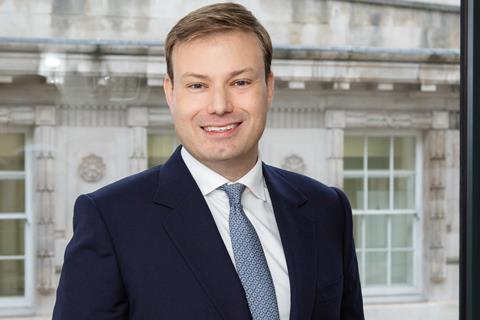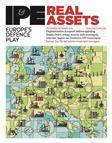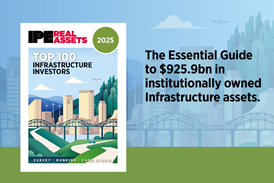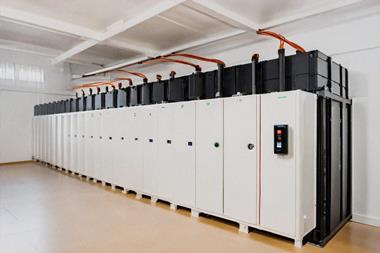Capacity constraints, caused by global shortages of pilots, aircraft and engineers, will likely boost near-term contract prices, writes Lee Mellor
The need for emergency aerial services is rising. Around the world, events that require an emergency response in areas such as firefighting, search and rescue or medical evacuations are becoming more frequent.

The traditional ‘windows’ in which such events occur are lasting far longer than before.
As of early August, wildfires have already burnt more than 350,000 hectares in Europe this year alone – more than twice 2024’s level.
Our portfolio company Avincis – Europe’s largest emergency aerial services operators – experienced one of its longest and most demanding firefighting seasons in 2024/25.
Meanwhile, California’s January 2025 Palisades fires occurred in winter, well outside of the usual peak wildfire months of July and August.
In addition, we’ve recently seen unseasonable storms and floods in Spain and extreme late snowfall in the Alps, all of which required airborne emergency response.
Market tailwinds
This flux is driving change in the market.
First and foremost, it’s prompting a rise in demand. Governments are having to consider how they can boost their aerial response capabilities as part of their overall national emergency response strategy and infrastructure.
Faced with budget constraints, and given the extremely high barriers of expertise required to operate such technically complex missions, they often turn to specialist third parties, such as Avincis, that have the scale, track record, operating licenses and existing bases at strategic locations, rather than developing or expanding their in-house capabilities.
The profile of demand is also changing. With longer fire seasons in both hemispheres, governments are looking at developing year-round standby capacity, rather than having seasonal resource. This is increasing demand for aircraft as fewer are available for cross- hemisphere operations as climates change through the year.
From an infrastructure investment perspective, this is leading to significant growth in the sector. It bolsters what has long been the attractive traditional infrastructure characteristics that the aerial emergency services sector has demonstrated.
Contracts are typically held with public sector counterparties and usually have built-in protection against inflation. Some operators also have the additional benefit of owning significant proportions of their aircraft and operating sites. Contracts are also agreed on a long-term basis with governments typically preferring to renew contracts with incumbents to ensure critical service continuity.

In the near-term, capacity challenges are also likely to drive up contract prices. With a global shortage of qualified pilots, aircraft, aircrew and engineers, as well as a very high skill and regulatory barrier to entry to the market, it is existing operators that will be best positioned to deliver – both operationally and financially.
Driving innovation
These market dynamics will also push existing operators to adapt. A longer window for events like wildfires means providers will have less time for the maintenance and training that traditionally took place during ‘off’ seasons. In response to this, Avincis has already moved to a rolling operational model that keeps assets and team members ready throughout the year.
There will also be new opportunities to build or strengthen relationships by offering new services or solutions in response to emerging challenges.
Technology is a defining theme here, with drones a particularly active area of development. While they aren’t set to replace manned aircraft any time soon given aircraft and helicopters’ ability to carry people that are required for rescue operations, they are showing real potential to complement manned operations.
For example, drones can be used to airlift a defibrillator to the site of a medivac in advance of a main rescue team arriving, or they can be deployed in particularly dangerous or difficult situations. Avincis’ in-house R&D division is developing drone solutions to support real-time mapping and analysis of fire patterns. A flagship innovation is LUMES, a proprietary rotary-wing Uncrewed Aerial System designed for high-risk missions, including firefighting and maritime surveillance.
In a rapidly growing market, there’s also an opportunity for providers with strong in-house training capabilities to offer these as a service – sharing their expertise to help develop the capabilities of others, as well as developing new revenue streams.
Established operators have the opportunity to expand into adjacent markets with similarly strong demand. For example, the offshore wind sector is only just starting to incorporate aerial services for functions such as servicing and crew. This is a high-growth area that Avincis is now stepping into, supported by its recent acquisition of specialist operator KN Helicopters and the experience it has developed through emergency services.
Bird’s eye view
The factors driving demand in the outsourced emergency aerial services segment aren’t set to subside any time soon.
Existing operators are incredibly well-placed to meet the needs of clients and also have significant headroom to expand, striking new partnerships and investing in new capabilities so they can continue to deliver value well into the future.
Investors have a real opportunity to support this market. By backing the best operators, they’re not only investing in a sector that exhibits traditional infrastructure characteristics but one that is playing a critical role in building safer, more resilient societies.
To read the latest IPE Real Assets magazine click here.


















